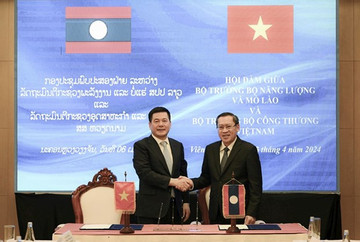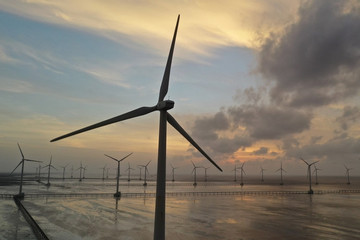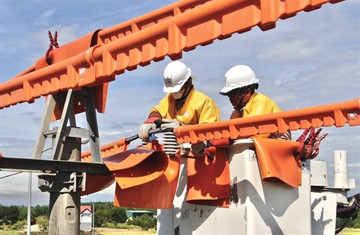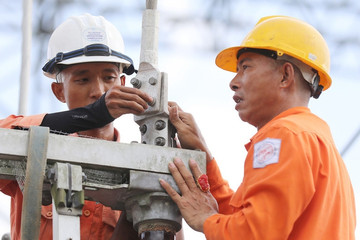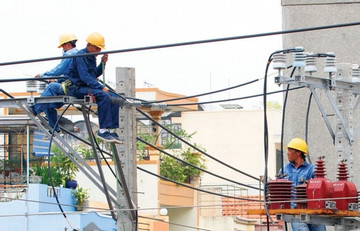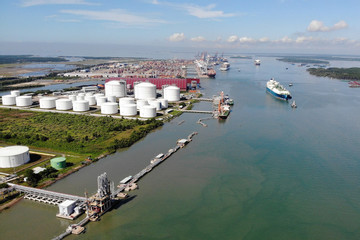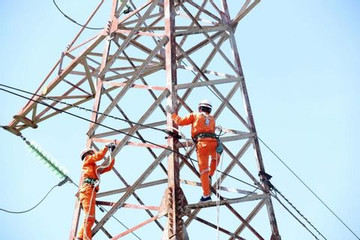- © Copyright of Vietnamnet Global.
- Tel: 024 3772 7988 Fax: (024) 37722734
- Email: evnn@vietnamnet.vn
vietnam's power market
Update news vietnam's power market
Vietnam to issue price framework to purchase electricity from Laos in Q2
Vietnam will issue a price framework to purchase electricity from Laos for the period after 2025 in the second quarter of this year, said Minister of Trade and Industry Nguyen Hong Dien.
Wind power import from Laos sought amid potential electricity shortages
The Ministry of Industry and Trade has asked the prime minister for approval to import wind power from Laos to mitigate potential electricity shortages in the northern region.
Electricity shortage anticipated, offshore power capacity still limited
Vietnam needs an additional 19,000MW of electricity in 2023-2025 to ensure supply, according to the Ministry of Industry and Trade (MOIT).
Electricity prices expected to surge in 2024: Ministry
In an effort to address financial challenges faced by Vietnam Electricity (EVN), the Ministry of Industry and Trade (MoIT) has put forth a proposal to increase electricity prices in 2024.
MOIT proposes electricity price hike in 2024
The Ministry of Industry and Trade’s (MOIT) proposal to raise retail electricity prices in 2024 comes amid difficulties faced by Electricity of Vietnam (EVN) and its loss of VND17 trillion last year.
MoIT to counteract rising electricity costs
The Ministry of Industry and Trade has suggested a three-month adjustment to the average price of electricity, instead of every six months as currently.
Electricity pricing and the opportunities for development
Resolution 55 on the energy development strategy clearly stipulates that Vietnam needs to remove all barriers to be sure that power pricing is transparent and determined by the market.
Electricity plans take shape for 2024
The government is being urged to improve the supply of electricity for production and business activities, with warnings that power shortages could continue undermining the economy’s efforts to garner new funding from abroad.
Electricity generators want to sell directly to consumers, not via EVN
The Ministry of Industry and Trade (MOIT) has found that 24 renewable power projects want direct power purchase agreements (DPPA), while the other 17 projects are considering seeking direct buyers.
Singaporean firm granted conditional approval to import renewal energy from VN
Singapore’s Energy Market Authority (EMA) on October 27 granted conditional approval to Sembcorp Utilities Pte Ltd (SCU) – a wholly-owned subsidiary of Sembcorp Industries (Sembcorp) to import wind power from Vietnam.
No more electricity monopoly, EVN holds 37% of total system capacity
The Electricity of Vietnam Group (EVN) is no longer a major power producer as it has contributed only 11% of electricity to the national grid this year.
Unable to borrow capital, coal-fired power developers switch to LNG projects
The developers of coal-fired projects have no other choice than to invest in gas-fired power plants. However, there are still no policies for the transition.
EVN proposes increasing electricity import from Laos
Due to the risk of an electricity undersupply in 2025, EVN has proposed importing more electricity from Laos.
EVN fears loss of millions of dollars when selling electricity to Laos
Replying to the suggestion on bilateral clearing of electricity volume bought and purchased between Vietnam and Laos, Electricity of Vietnam (EVN) said that no legal basis exists to implement this kind of solution.
Will new pricing scheme lead to dramatic electricity retail price hike?
The Ministry of Industry and Trade’s (MOIT) draft decision on adjusting average electricity prices includes information on whether losses incurred from electricity production activities will be counted when calculating retail prices.
Adjusting electricity price every three months reasonable: EVN
EVN says that when electricity production cost decreased by 1 per cent or more, the average electricity retail price would be reduced at the...
Power enterprises see bright future despite poor results in Q2/2023
Demand for electricity is expected to continue to rise rapidly as the country’s economic growth regains momentum in the near future.
Government urges EVN to complete electricity pricing mechanism
The Vietnamese government has requested that the MoIT amend and supplement the mechanism for adjusting the average retail price of electricity and the structure of the retail electricity tariff.
Ministry proposes DPPA to attract investors to electricity industry
The Ministry of Industry and Trade (MOIT) has conducted research on a pilot DPPA (direct power purchase agreement) scheme which would allow consumers to buy electricity directly from power-generating units instead of through EVN.
Audit finds loss of more than VND20 trillion at EVN
In its recently audited financial report, the Vietnam Electricity (EVN) announced a loss of VND20 trillion, attributing it to the acquisition of electricity at costs exceeding its selling prices.
